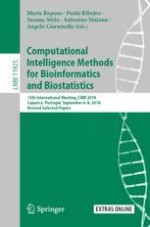2020 | OriginalPaper | Buchkapitel
Effect of Epigallocatechin-3-gallate on DMPC Oxidation Revealed by Infrared Spectroscopy
verfasst von : Filipa Pires, Bárbara Rodrigues, Gonçalo Magalhães-Mota, Paulo A. Ribeiro, Maria Raposo
Erschienen in: Computational Intelligence Methods for Bioinformatics and Biostatistics
Aktivieren Sie unsere intelligente Suche, um passende Fachinhalte oder Patente zu finden.
Wählen Sie Textabschnitte aus um mit Künstlicher Intelligenz passenden Patente zu finden. powered by
Markieren Sie Textabschnitte, um KI-gestützt weitere passende Inhalte zu finden. powered by
